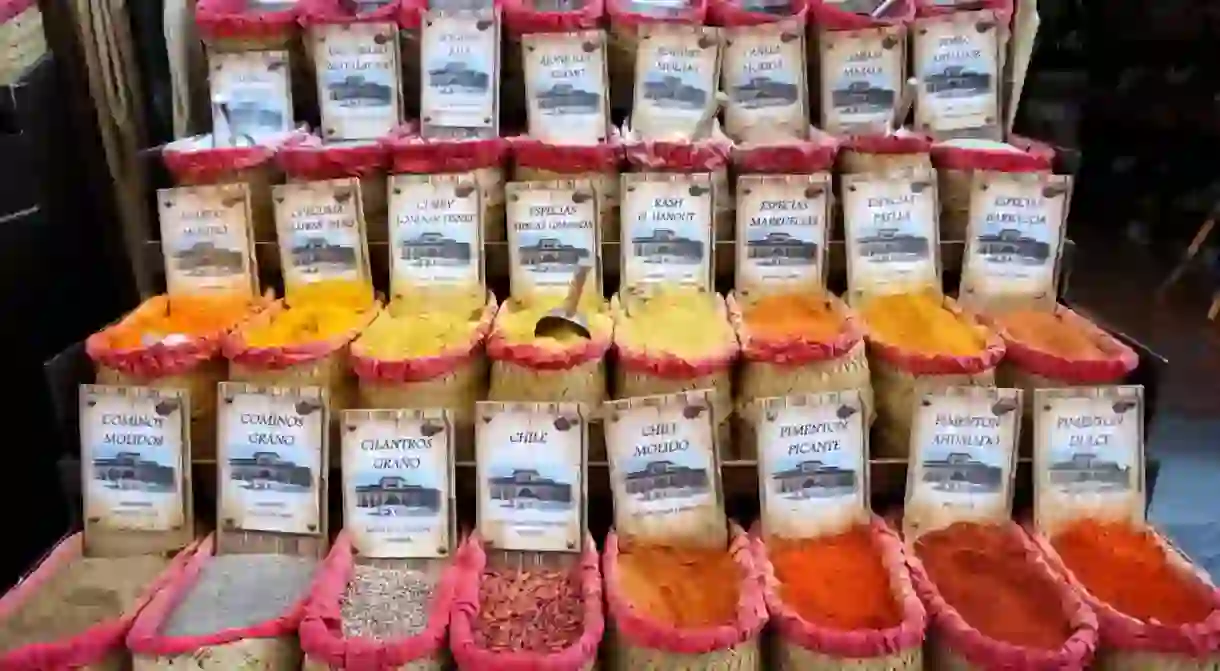An Essential Guide to Granada’s Local Spices

Owing to its distinguished Moorish heritage – abruptly terminated in 1492 when the Catholic monarchs Ferdinand and Isabella seized the city – Granada’s cuisine has been strongly influenced by Arabic spices and herbs. Today, a huge range of these are on sale in the Alcaiceria market, situated on the site of the city’s former Grand Bazaar, and on colourful street stalls around the cathedral.
Alcaiceria Market
Market

The reconstruction you can visit today is a shadow of what Granada’s Grand Bazaar once was, with some of its stores selling nothing but tacky souvenirs. Yet still at the Alcaiceria, from stalls and shops in the surrounding streets and from Plaza Bib-Rambla, you can find all manner of spices and herbs – some for cooking, some for pure enjoyment. Medievo, an excellent outlet specialising solely in spices, has two shops in this area and there is often a stall on the west side of the cathedral, on Calle Carcel Baja, from which you can buy everything from turmeric to cannabis-based concoctions.
Turmeric and Cumin
Throughout the centuries, southern Spanish cuisine has been hugely influenced by the spices and herbs available from nearby Morocco. Probably the most widely-used of these are cumin (comino) and turmeric (curcuma). In the stalls around Bib-Rambla and the Alcaiceria, these are also some of the most eye-catching spices on sale: heaps of yellow and light brown powder in authentic-style woven bags, they cry out to be sniffed and tasted. Their aromatic, mildly-spicy flavours are used in many Andalucian stews and casseroles.
Saffron
Saffron (azafran) is another popular spice you can buy around the Alcaiceria, both ground (molido) and in wispy threads that are plucked directly from the saffron crocus flower then dried. This is the delicate, expensive spice that gives paella rice its distinctive yellow colour. Incidentally, the reason saffron is so expensive is because for each pound approximately 250,000 flowers are needed. Beware, then, of stalls selling saffron at what appears to be an amazingly low price, especially if ground: it is likely to be a blend in which saffron features less than turmeric.

Paprika
Peppers and paprika (pimentón) are another staple of Spanish cooking and can be found in colourful abundance around the cathedral and Alcaiceria. These smoky, woody spices are varying shades of red and look particularly attractive when displayed next to the yellow of turmeric and the orange of saffron. They differ in levels of spiciness, from dulce at the mild end of the spectrum, to picante at the hot end. Also available is a wide range of black and white peppercorns.
Spice/herb blends
On the site of Granada’s old bazaar, you’ll also find spice blends for particular dishes, such as, pre-prepared spice mixes for paella, curry and pinchitos, which are delicious southern-Spanish/Arabic take on kebabs or skewers. Served in all the tapas bars, these are usually comprised of generous chunks of chicken or pork seasoned to perfection with hints of turmeric, paprika and cumin.

Herbal Teas
If you are particularly interested in infusions with a Moorish flavour, Calle Calderia Nueva is central Granada’s other hotspot. Located the other side of Gran Via and just a two-minute walk from the cathedral and Alcaiceria, this chaotic mini-souk is lined with shops selling Arabic herb blends, fabrics and ceramics and cafés offering every conceivable tea-infusion flavour imaginable.













